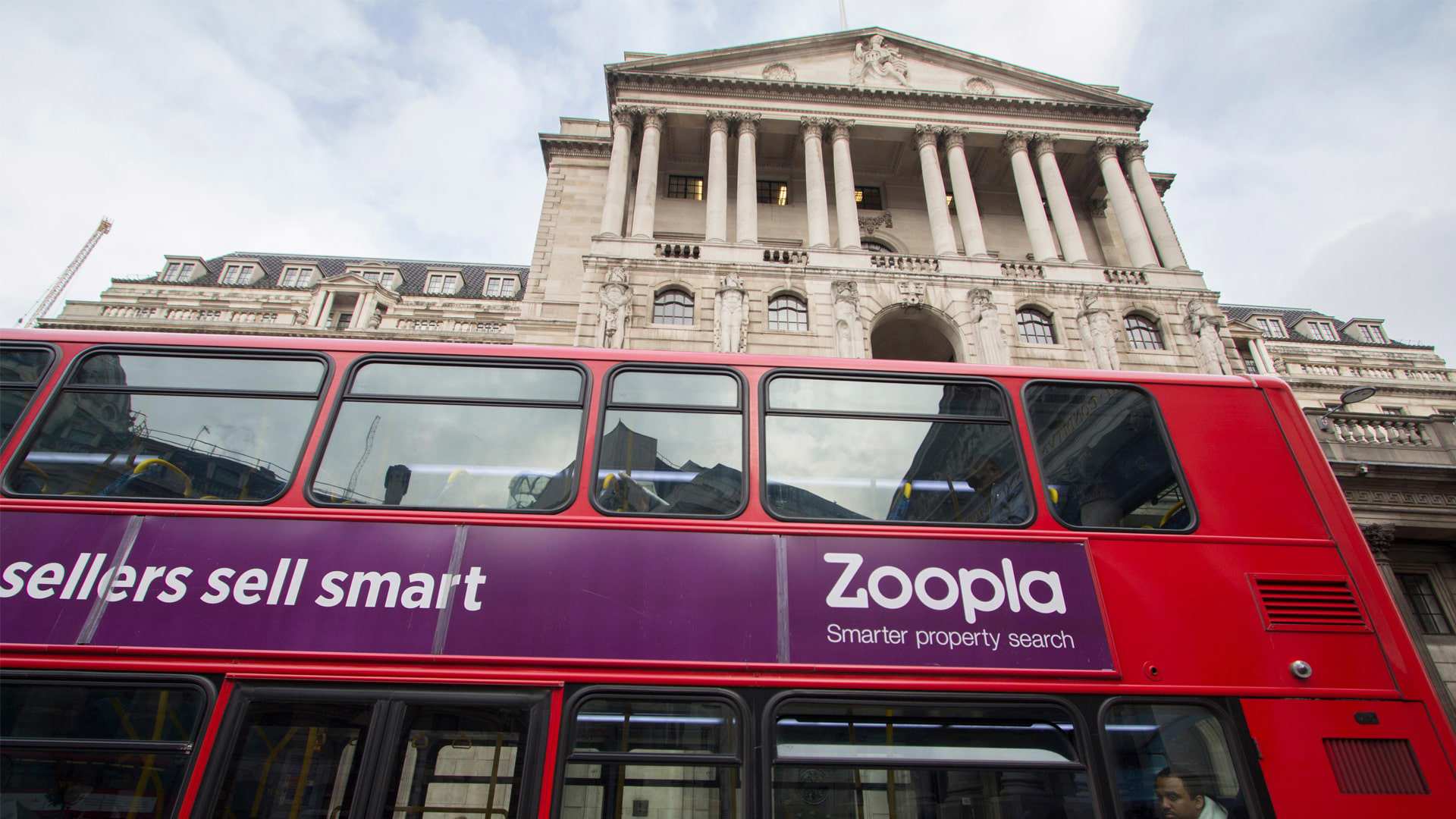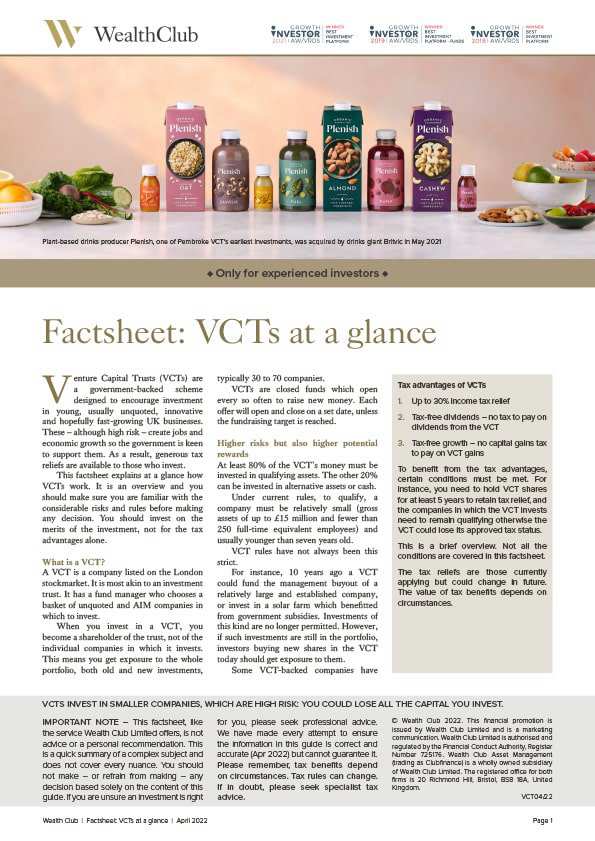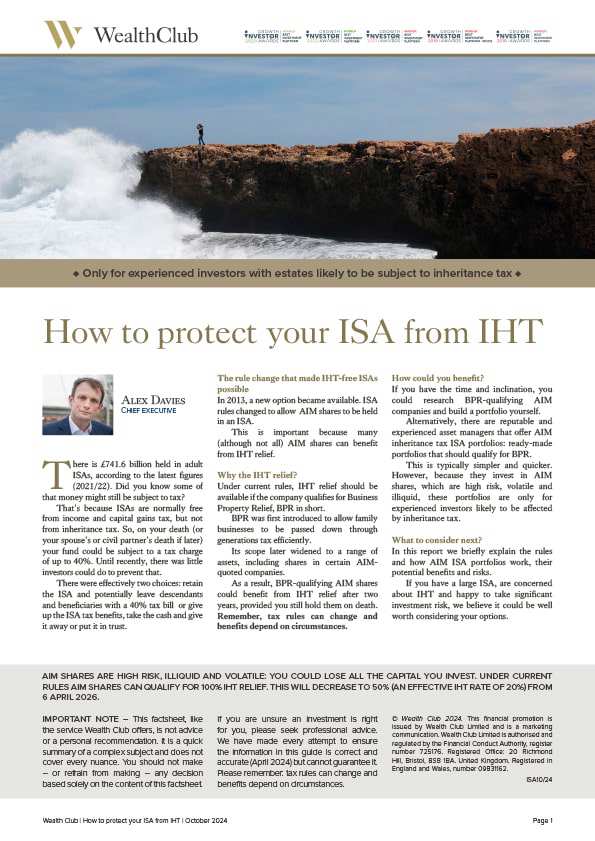Don't invest unless you’re prepared to lose all the money you invest. This is a high-risk investment and you are unlikely to be protected if something goes wrong. Take 2 mins to learn more.
Estimated reading time: 2 min
Due to the potential for losses, the Financial Conduct Authority (FCA) considers this investment to be high risk.
What are the key risks?
- You could lose all the money you invest
- If the business you invest in fails, you are likely to lose 100% of the money you invested. Most start-up businesses fail.
- You are unlikely to be protected if something goes wrong
- Protection from the Financial Services Compensation Scheme (FSCS), in relation to claims against failed regulated firms, does not cover poor investment performance. Try the FSCS investment protection checker here.
- Protection from the Financial Ombudsman Service (FOS) does not cover poor investment performance. If you have a complaint against an FCA-regulated firm, FOS may be able to consider it. Learn more about FOS protection here.
- You won’t get your money back quickly
- Even if the business you invest in is successful, it may take several years to get your money back. You are unlikely to be able to sell your investment early.
- The most likely way to get your money back is if the business is bought by another business or lists its shares on an exchange such as the London Stock Exchange. These events are not common.
- If you are investing in a start-up business, you should not expect to get your money back through dividends. Start-up businesses rarely pay these.
- Don’t put all your eggs in one basket
- Putting all your money into a single business or type of investment for example, is risky. Spreading your money across different investments makes you less dependent on any one to do well.
- A good rule of thumb is not to invest more than 10% of your money in high-risk investments.
- The value of your investment can be reduced
- The percentage of the business that you own will decrease if the business issues more shares. This could mean that the value of your investment reduces, depending on how much the business grows. Most start-up businesses issue multiple rounds of shares.
- These new shares could have additional rights that your shares don’t have, such as the right to receive a fixed dividend, which could further reduce your chances of getting a return on your investment.
If you are interested in learning more about how to protect yourself, visit the FCA’s website here.
Help smaller companies grow and receive valuable tax reliefs
Britain has a rich, centuries-long history of innovation. Fast-growing young companies contribute £1 trillion to our economy and employ 3.2 million people: they are the country’s growth engine, the lifeblood of the economy.
Vital to this is the support of private investors, often backed by the government through its Venture Capital Schemes: Venture Capital Trusts (VCTs), and the Enterprise and Seed Enterprise Investment Schemes (EIS and SEIS).
These schemes were set up to encourage investment in young and dynamic British enterprise. The long-term reward for doing so is the potential to back a winner if things work out. The short-term reward for experienced investors is the significant tax reliefs the government offers in exchange for supporting high-risk younger businesses.
Tax rules can change and benefits depend on circumstances. This is a brief outline based on current rules: there are detailed conditions and rules you should consider carefully before investing. If unsure, seek advice. These are high-risk investments and you should invest on the merits of the investment, not for the tax advantages alone.
Featured
Featured VCTs, EIS and SEIS funds
Our favourite current VCT, EIS and SEIS opportunities: investments we think have genuine merit, whose managers we believe can deliver returns to investors. Read more »
Help young and ambitious companies grow and receive up to 30% income tax relief, tax-free dividends and tax-free growth. Tax rules can change and benefits depend on circumstances; dividends are not guaranteed.
 = Featured Offer
= Featured Offer
| VCT name | Target dividend | Wealth Club initial saving | Net initial charge | Annual rebate | Funds raised / sought | Minimum investment | Next deadline | Invest now |
|---|---|---|---|---|---|---|---|---|
Albion VCTsLong-established VCTs with a diversified portfolio of technology and scale-up companies Find out more |
5% of NAV
|
–
|
3%
|
0.10%
|
£45.2m / £60m
75% full
Overallotting
|
£6,000
|
16 Dec 2025 (9am) for first allotment
|
|
Baronsmead VCTsAmongst the longest-standing and most diverse VCTs with exposure to private and AIM companies Find out more |
7% of NAV
|
2% (2.25% existing investors)
|
2.5% (2.25% existing investors)
|
0.15%
|
£14.8m / £30m
|
£5,000
|
Limited early bird capacity
|
|
British Smaller Companies VCTsTwo of the longest-established Venture Capital Trusts, managed by YFM Equity Partners. Find out more |
Not specified
|
2%
|
3%
|
0.10%
|
£78.7m / £85m
92% full
Overallotting
|
£6,000
|
Limited capacity remaining
|
|
Maven VCTsLong established VCTs managed by one of the largest investment teams in the VCT sector, and diversified portfolio of 100+ private and AIM-quoted regional companies Find out more |
6% of NAV
|
4.25% (4.5% existing investors)
|
1.25% (1% existing investors)
|
0.10%
|
£12.5m / £30m
|
£5,000
|
12 Jan (9am) for Jan 2026 allotment
|
|
Northern VCTsAmong the longest-running VCTs, with a strong investor following, managed by Mercia Ventures Find out more |
4.5% to 5% of NAV
|
2.5% (3.0% existing investors)
|
3% (2.5% existing investors)
|
0.10%
|
£49m / £50m
98% full
Overallotting
|
£6,000
|
Only one VCT open
|
|
Octopus Apollo VCTManaged by Octopus Ventures, the UK’s second-largest VCT targets revenue-generating businesses with a focus on B2B software companies Find out more |
5% of NAV
|
4.5% (5.5% existing investors)
|
1% (0% existing investors)
|
0.10%
|
£31.2m / £75m
|
£5,000
|
16 Dec 2025 for 2% early bird
|
|
Pembroke VCTVCT seeking to back young companies developing brands in the consumer, technology and business services sectors Find out more |
5p per share
|
2%
|
3%
|
0.10%
|
£16.3m / £40m
|
£5,000
|
2 Apr 2026 (noon) for 2025/26
|
|
ProVen VCTsEstablished VCTs with a track record of investing in growth capital companies, particularly e-commerce. Find out more |
5% of NAV
|
2.5%
|
3%
|
0.10%
|
£4.7m / £30m
|
£5,000
|
1 Apr 2026 (noon) for 2025/26
|
|
Triple Point Venture VCTA VCT investing primarily in B2B companies from an early stage in their lifecycle Find out more |
5% of NAV
|
4% (5% existing investors)
|
1.5% (0.5% existing investors)
|
0.10%
|
£11.9m / £20m
Overallotting
|
£3,000
|
31 Dec 2025 for early bird saving
|
|
| View ALL Venture Capital Trusts OFFERS | ||||||||
Help young and ambitious companies grow and receive up to 30% income tax relief, defer capital gains from elsewhere and qualify for IHT relief. Tax rules can change and benefits depend on circumstances.
 = Featured Offer
= Featured Offer
| Fund name | Sector | Target return | Minimum investment | Targeted allotment | Next deadline | Invest now |
|---|---|---|---|---|---|---|
Fuel Ventures Follow-on EIS FundMaking follow-on investments in companies Fuel previously backed and considers promising Find out more |
Technology
|
5x
|
£20,000
|
2025/26
|
19 Dec 2025
|
|
Fuel Ventures Scale-up EIS FundManaged by entrepreneur-turned-investor Mark Pearson, the fund targets early-stage digital businesses Find out more |
Technology
|
10x
|
£20,000
|
12 to 15 months
|
Discretionary
|
|
Guinness EISTargets scale-up businesses already generating revenue, preferably £1 million or above Find out more |
Various
|
2x
|
£20,000
|
2025/26
|
19 Dec 2025
|
|
Haatch EIS FundEntrepreneur-led team targeting primarily software-as-a-service businesses Find out more |
Technology
|
3x
|
£20,000
|
2025/26
|
31 Dec 2025
|
|
MMC Ventures EIS FundFocuses on businesses improving existing technology, rebuilding tech infrastructure, or using data in innovative ways Find out more |
Technology
|
2-3x
|
£25,000
|
24 months
|
Discretionary
|
|
Molten Ventures EIS FundFund targeting early-stage technology companies, managed by the same team as Molten Ventures VCT Find out more |
Technology
|
Unspecified
|
£25,000
|
12 to 18 months
|
2 Jan 2026
|
|
Parkwalk Opportunities EIS FundFund focused on UK university spinouts, managed by one of the UK’s most active spinout investors Find out more |
University spinouts
|
Unspecified
|
£25,000
|
12 to 18 months
|
Discretionary
|
|
| View ALL EIS OFFERS | ||||||
Help ambitious startups grow and receive up to 50% relief on income and capital gains tax on gains from elsewhere, plus qualify for tax-free growth and IHT relief. Tax rules can change and benefits depend on circumstances.
 = Featured Offer
= Featured Offer
| Fund name | Sector | Target return | Minimum investment | Targeted allotment | Next deadline | Invest now |
|---|---|---|---|---|---|---|
Fuel Ventures SEIS FundFuel Ventures SEIS Fund aims to provide seed funding to very early-stage startups and mentor their growth Find out more |
Technology
|
5x
|
£20,000
|
2025/26
|
19 Dec 2025
|
|
Haatch SEIS FundEntrepreneur-led team targeting primarily software-as-a-service businesses Find out more |
Technology
|
5x
|
£10,000
|
2026/27
|
13 Feb 2026
|
|
Startup Funding Club SEIS FundFund investing in startups, managed by one of Europe’s most active seed investors Find out more |
Technology
|
3x
|
£10,000
|
2025/26
|
15 Jan 2026
|
|
| View ALL SEIS OFFERS | ||||||
Help young and ambitious companies grow and receive up to 30% income tax relief, tax-free dividends and tax-free growth. Tax rules can change and benefits depend on circumstances; dividends are not guaranteed.
 = Featured Offer
= Featured Offer
| VCT name | Target dividend | Wealth Club initial saving | Net initial charge | Annual rebate | Funds raised / sought | Minimum investment | Next deadline | Invest now |
|---|---|---|---|---|---|---|---|---|
Albion VCTsLong-established VCTs with a diversified portfolio of technology and scale-up companies Find out more |
5% of NAV
|
–
|
3%
|
0.10%
|
£45.2m / £60m
75% full
Overallotting
|
£6,000
|
16 Dec 2025 (9am) for first allotment
|
|
Baronsmead VCTsAmongst the longest-standing and most diverse VCTs with exposure to private and AIM companies Find out more |
7% of NAV
|
2% (2.25% existing investors)
|
2.5% (2.25% existing investors)
|
0.15%
|
£14.8m / £30m
|
£5,000
|
Limited early bird capacity
|
|
British Smaller Companies VCTsTwo of the longest-established Venture Capital Trusts, managed by YFM Equity Partners. Find out more |
Not specified
|
2%
|
3%
|
0.10%
|
£78.7m / £85m
92% full
Overallotting
|
£6,000
|
Limited capacity remaining
|
|
Maven VCTsLong established VCTs managed by one of the largest investment teams in the VCT sector, and diversified portfolio of 100+ private and AIM-quoted regional companies Find out more |
6% of NAV
|
4.25% (4.5% existing investors)
|
1.25% (1% existing investors)
|
0.10%
|
£12.5m / £30m
|
£5,000
|
12 Jan (9am) for Jan 2026 allotment
|
|
Northern VCTsAmong the longest-running VCTs, with a strong investor following, managed by Mercia Ventures Find out more |
4.5% to 5% of NAV
|
2.5% (3.0% existing investors)
|
3% (2.5% existing investors)
|
0.10%
|
£49m / £50m
98% full
Overallotting
|
£6,000
|
Only one VCT open
|
|
Octopus Apollo VCTManaged by Octopus Ventures, the UK’s second-largest VCT targets revenue-generating businesses with a focus on B2B software companies Find out more |
5% of NAV
|
4.5% (5.5% existing investors)
|
1% (0% existing investors)
|
0.10%
|
£31.2m / £75m
|
£5,000
|
16 Dec 2025 for 2% early bird
|
|
Pembroke VCTVCT seeking to back young companies developing brands in the consumer, technology and business services sectors Find out more |
5p per share
|
2%
|
3%
|
0.10%
|
£16.3m / £40m
|
£5,000
|
2 Apr 2026 (noon) for 2025/26
|
|
ProVen VCTsEstablished VCTs with a track record of investing in growth capital companies, particularly e-commerce. Find out more |
5% of NAV
|
2.5%
|
3%
|
0.10%
|
£4.7m / £30m
|
£5,000
|
1 Apr 2026 (noon) for 2025/26
|
|
Triple Point Venture VCTA VCT investing primarily in B2B companies from an early stage in their lifecycle Find out more |
5% of NAV
|
4% (5% existing investors)
|
1.5% (0.5% existing investors)
|
0.10%
|
£11.9m / £20m
Overallotting
|
£3,000
|
31 Dec 2025 for early bird saving
|
|
| View ALL Venture Capital Trusts OFFERS | ||||||||
Help young and ambitious companies grow and receive up to 30% income tax relief, defer capital gains from elsewhere and qualify for IHT relief. Tax rules can change and benefits depend on circumstances.
 = Featured Offer
= Featured Offer
| Fund name | Sector | Target return | Minimum investment | Targeted allotment | Next deadline | Invest now |
|---|---|---|---|---|---|---|
Fuel Ventures Follow-on EIS FundMaking follow-on investments in companies Fuel previously backed and considers promising Find out more |
Technology
|
5x
|
£20,000
|
2025/26
|
19 Dec 2025
|
|
Fuel Ventures Scale-up EIS FundManaged by entrepreneur-turned-investor Mark Pearson, the fund targets early-stage digital businesses Find out more |
Technology
|
10x
|
£20,000
|
12 to 15 months
|
Discretionary
|
|
Guinness EISTargets scale-up businesses already generating revenue, preferably £1 million or above Find out more |
Various
|
2x
|
£20,000
|
2025/26
|
19 Dec 2025
|
|
Haatch EIS FundEntrepreneur-led team targeting primarily software-as-a-service businesses Find out more |
Technology
|
3x
|
£20,000
|
2025/26
|
31 Dec 2025
|
|
MMC Ventures EIS FundFocuses on businesses improving existing technology, rebuilding tech infrastructure, or using data in innovative ways Find out more |
Technology
|
2-3x
|
£25,000
|
24 months
|
Discretionary
|
|
Molten Ventures EIS FundFund targeting early-stage technology companies, managed by the same team as Molten Ventures VCT Find out more |
Technology
|
Unspecified
|
£25,000
|
12 to 18 months
|
2 Jan 2026
|
|
Parkwalk Opportunities EIS FundFund focused on UK university spinouts, managed by one of the UK’s most active spinout investors Find out more |
University spinouts
|
Unspecified
|
£25,000
|
12 to 18 months
|
Discretionary
|
|
| View ALL EIS OFFERS | ||||||
Help ambitious startups grow and receive up to 50% relief on income and capital gains tax on gains from elsewhere, plus qualify for tax-free growth and IHT relief. Tax rules can change and benefits depend on circumstances.
 = Featured Offer
= Featured Offer
| Fund name | Sector | Target return | Minimum investment | Targeted allotment | Next deadline | Invest now |
|---|---|---|---|---|---|---|
Fuel Ventures SEIS FundFuel Ventures SEIS Fund aims to provide seed funding to very early-stage startups and mentor their growth Find out more |
Technology
|
5x
|
£20,000
|
2025/26
|
19 Dec 2025
|
|
Haatch SEIS FundEntrepreneur-led team targeting primarily software-as-a-service businesses Find out more |
Technology
|
5x
|
£10,000
|
2026/27
|
13 Feb 2026
|
|
Startup Funding Club SEIS FundFund investing in startups, managed by one of Europe’s most active seed investors Find out more |
Technology
|
3x
|
£10,000
|
2025/26
|
15 Jan 2026
|
|
| View ALL SEIS OFFERS | ||||||
What are the main differences between VCTs, EIS and SEIS?
Despite investing in broadly similar types of companies, there are significant differences between VCTs, EIS and SEIS.
Firstly, the tax reliefs and allowances. Secondly, the structure.
When you invest in a VCT, you acquire shares in the trust, not in the underlying companies. So, with one VCT share you gain exposure to all the companies in the VCT portfolio. Moreover, theoretically, you could sell your shares any time and realise your investment, although there may be restrictions.
When you invest in an EIS or SEIS fund, you acquire shares in the underlying companies. As those are not typically listed, you cannot usually sell your shares on the stock market. You can only realise your investment when there is an exit, i.e. the company is sold, listed on a stock market or refinanced. EIS/SEIS funds will typically be less diversified than a VCT, as fewer companies are held.
How do VCT, EIS and SEIS tax reliefs compare at a glance?
| VCT | EIS | SEIS | |
|---|---|---|---|
| Maximum investment per tax year | £200,000 | £2,000,000* | £200,000 |
| Carry back | no | available | available |
| Income tax relief | up to 30% | up to 30% | up to 50% |
| CGT relief/deferral | no | deferral | up to 50% |
| Tax-free dividends | yes | no | no |
| Tax-free growth | yes | yes | yes |
| IHT relief** | no | yes | yes |
| Loss relief | no | yes | yes |
* Provided anything over £1 million is invested in Knowledge Intensive companies.
** From 6 April 2026 100% IHT relief on EIS and SEIS private companies will be limited to the first £1 million of qualifying assets (including private companies and agricultural property), with the remainder eligible for 50% IHT relief (an effective IHT rate of 20%). Any amount of this allowance unused on death can be passed to a surviving spouse. Any qualifying S/EIS companies quoted on AIM will be eligible for 50% IHT relief (an effective IHT rate of 20%).
Tax rules can change and benefits depend on circumstances. This is a brief outline based on current rules: there are detailed conditions and rules you should consider carefully before investing. If unsure, seek advice. These are high-risk investments and you should invest on the merits of the investment, not for the tax advantages alone.
Discover more
Our free guides and factsheets give you the main facts in plain English.






